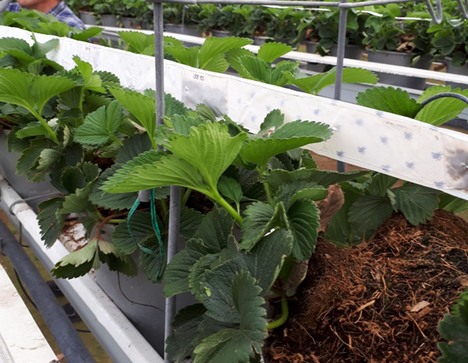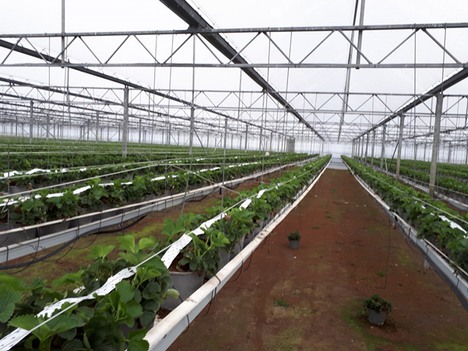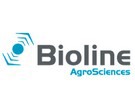Bioline Agrosciences is a provider of biological crop protection technology: Bio-solutions, including macrobiologicals, pollination and associated products. “Through our distribution network we supply technology, advice and products to help growers produce a world leading product.”
The adoption of bio-solutions in controlling insect pests in strawberry has become more necessary than ever due to EU regulations restricting the use of chemicals, resistance issues with insecticides and increased consumer awareness of pesticide-free products.
Monitoring of the crop
Start monitoring just after planting, to detect pests as early as possible and to identify the life stages. Check the leaves and flowers thoroughly; use Trapline and Trapline t+ sticky traps for early detection of flying pests. It is common to use markers to indicate hot spots so the grower can treat the pests locally and prevent spread to the rest of the crop. Trapline t+ is a unique innovative roller sticky trap impregnated with a patented thrips aggregation pheromone, increasing trap sensitivity and giving very early detection of thrips.

Look out for thrips
Thrips are considered the most important and should be a priority in a control program. The best control options combine the use of Oriline (Orius laevigatus) with Amblyline (Amblyseius Cucumeris) or Montyline (Amblyseius montdorensis).
Oriline contains a predator able to survive and build good populations even in the absence of thrips by feeding on flower pollen. It is a voracious predator attacking all mobile stages of thrips and giving high levels of control. Temperature and daylength during establishment is critical and it can be sensitive to chemicals. Amblyline and Montyline contain predatory mites which can also survive on pollen and establish prior to the presence of the pest, feeding on young thrips and eggs to control the population. Also giving additional control of Tarsonemid mites. Available in a variety of Bioline innovative technological sachet systems, including Bugline, Gemini sachets and Stickline to give best protection of the strawberry crop. Montyline will also control whitefly in the correct conditions.
Introduce Spider mite control
Spider mites are one of most important strawberry pests. They can appear in hot spots or widespread through the crop and early detection is the key for successful control. Once spider mite appears in the crop use Phytoline (Phytoseiulus persimilis) in the affected and surrounding areas also distributing in lower numbers over the rest of the crop. In the absence of spider mites the company can preventively use Californiline (Amblyseius californicus) or Anderline (Amblyseius andersoni) depending on temperatures. As above these mites will feed on young spider mites and eggs and can establish on pollen when there is no pest present.

Don’t let aphids become a problem
Aphids can be a major problem and if the aphid can be identified then a specific aphid control can be applied. If the main aphid species is Myzus sp and/or Aphis sp, the proper solution is the use of Aphiline (Aphidius colemani) parasitoids which give good control over these species. Alternatively, if there is a mix of aphid or species that isn’t identifiable, Aphiline Strawberry can be used.
Check for Vine weevil
Otiorynchus can be a major problem in protected strawberries in autumn and spring. Nematodes work exceptionally well against the larvae of these pests if applied to the growing medium. “We suggest application of nematodes in small regular doses throughout the whole growing season. Exhibitline Hb (Heterohabditis bacteriophora) can be used effectively when the growing media temperatures are up to 14°C and above.”
Last but not least Bioline recommends the use of bumblebees for increase in pollinated flowers and increased production of high quality fruits. Low temperatures and cloudy weather during winter and early spring months lead to malformed and misshapen fruits. To assure high levels of pollination under these non-favourable conditions, use their Beeline Soft Fruit beehive. Introduce the hives with the first flowers and keep introducing throughout the flowering season.
For more information:
Bioline Agrosciences
www.biolineagrosciences.com
sales@biolineagrosciences.com
